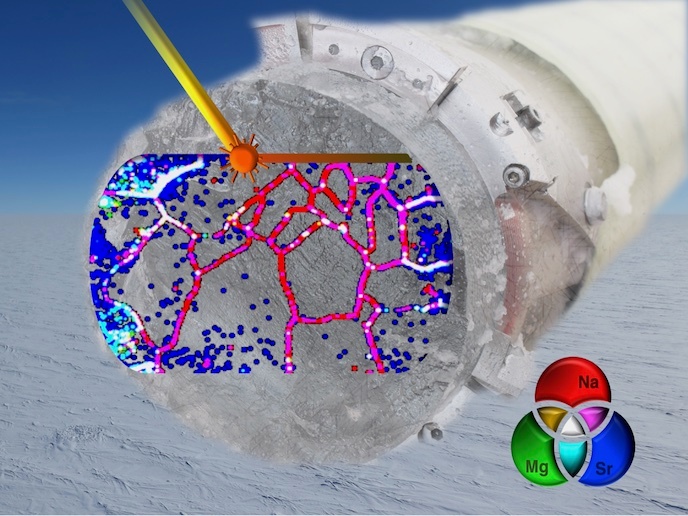A new way of studying very old ice cores
The key to preparing for a future defined by climate change is to understand the past. But what if that past is buried deep under layers of Antarctic ice? “Antarctic ice cores are a unique archive, allowing us to study past climate variations associated with atmospheric temperature and circulation as well as the greenhouse gas concentrations from hundreds of thousands of years ago,” says Pascal Bohleber, a researcher at Ca’ Foscari University of Venice. Deciphering the oldest part of an ice core record requires the study of the deepest layers of ice. With the support of the EU-funded GOLD-ICE project, Bohleber, a Marie Skłodowska-Curie fellow, set out to do exactly that. “With this project, I targeted a new way of investigating previously untapped palaeoclimatic signals that are stored in the highly thinned deep layers of Antarctic ice cores,” he adds.
Demonstrating the potential of LA-ICP-MS
Based on their unique set of palaeoclimate information, Antarctic ice cores could deliver an important missing piece of the climate puzzle – the cause of the so-called mid-Pleistocene transition. “We know that this period, which occurred roughly 1.2 million years ago, saw a reorganisation in the periodic shifts from warm to cold climates,” explains Bohleber. “This represents a fundamental change in the dynamics of our climate system, and Antarctic ice may give us the key to figuring out what caused it.” A particular challenge to doing this is that the ice becomes increasingly thinner the deeper the drill, making it difficult to identify palaeoclimatic signals. As current technology doesn’t provide the required level of detail, there is a growing demand for a high-resolution solution for taking ice core measurements. One leading contender is Laser-Ablation Inductively-Coupled Plasma Mass Spectrometry (LA-ICP-MS). A high-resolution, micro-destructive technique for glacio-chemical analysis, LA-ICP-MS’ true differentiator is that its laser is able to remove just a few tenths of a microlitre of ice from the surface. “The GOLD-ICE project aimed to further demonstrate the potential of LA-ICP-MS for ice core analysis, paving the way for its use in such next-generation ice core projects as the EU’s Beyond EPICA Oldest Ice Core initiative,” remarks Bohleber.
Mission accomplished
The project succeeded in advancing LA-ICP-MS as a powerful technique for producing images of the chemical sample’s composition at micron-scale resolution and over comparatively large areas. Bohleber also adapted this state-of-the-art chemical imaging to the unique needs involved in the studying of ice cores, including the ability to look at the chemical stratigraphy in deep ice in 2D. “We now have a better understanding of the physical origin of LA-ICP-MS ice core signals, which will help avoid misinterpretation and thus is a big step towards exploiting this technology’s full potential,” says Bohleber. “In other words, the overarching goal of the GOLD-ICE project has been reached – in the midst of a pandemic – and I am extremely happy about this achievement.” The project also allowed Bohleber to build a network with the European ice core community, and through these connections the work done during the GOLD-ICE project promises to play an important role in the Beyond EPICA initiative. He has also been awarded another Marie Skłodowska-Curie Fellowship and is beginning to work on a new EU-funded project that represents the next step in the use of LA-ICP-MS in studying ice cores.
Keywords
GOLD-ICE, ice cores, Antarctic, climate change, greenhouse gas, palaeoclimatic, LA-ICP-MS, Beyond EPICA






